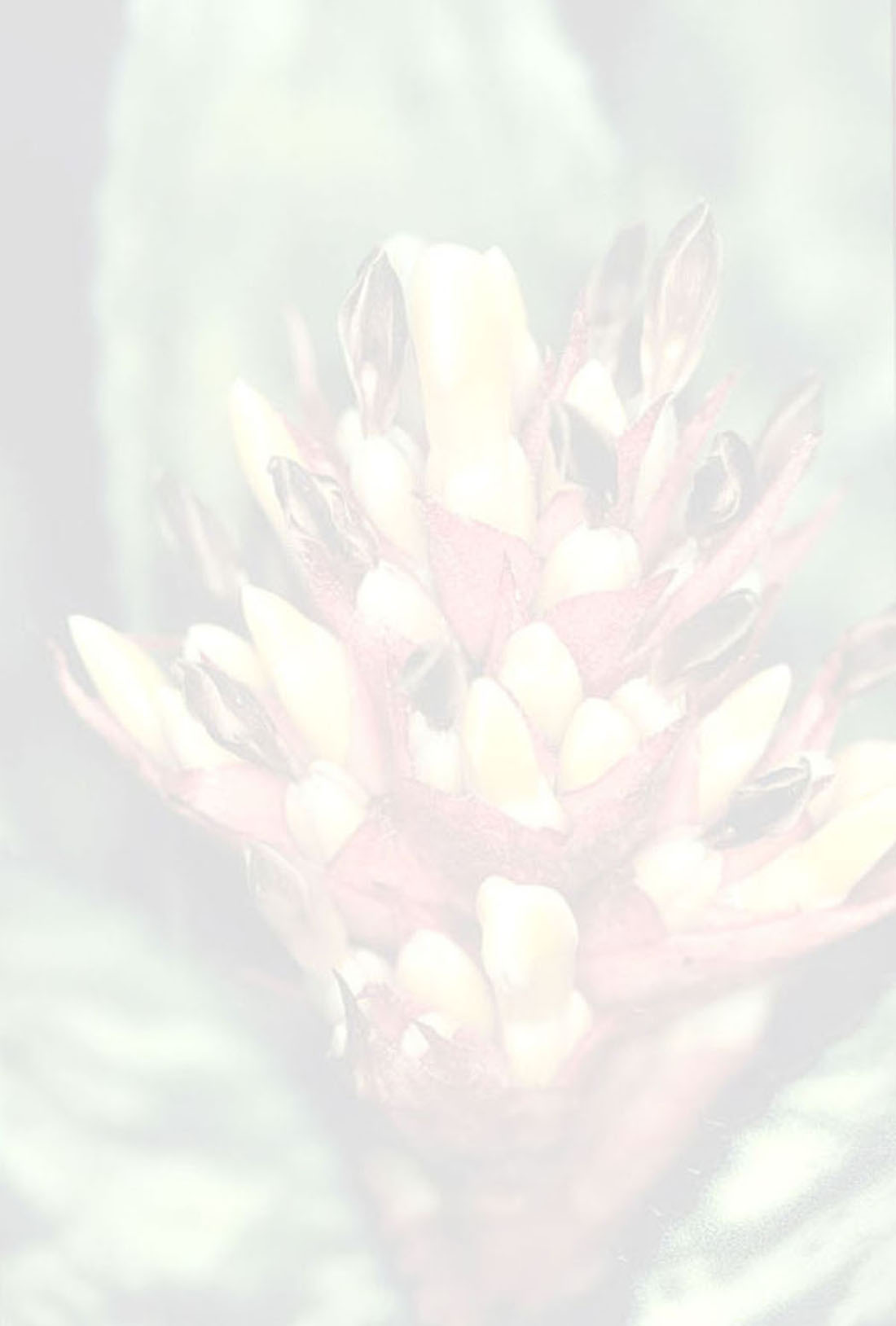

 Aechmea sulbahianensis Leme, Amorim & J A Siqueira[as Aechmea sulbahianensis Leme, Amorim & J. A. Siqueira]
Aechmea sulbahianensis Leme, Amorim & J A Siqueira[as Aechmea sulbahianensis Leme, Amorim & J. A. Siqueira]Diagnose: —Species nova A. linharesiorum Leme affinis est, a qua laminis foliorum manifeste longioribus latioribusque, subtus subdense vel dense lepidotis, apice spina distincta atrocastanea desinente, marginibus subdense spinulosis, ramis basalibus longioribus, bracteis floriferis apice spina distincta desinente et petalis late acutis et tenuiter apiculatis differt. Observations: —DISCUSSION
Aechmea sulbahianensis is morphologically similar to A. linharesiorum, but the new species is distinguished as follows; leaf bldes distinctly longer (40-90 cm vs. 23-35 cm long), abaxial surface subdensely lepidote (vs. glabrescent), blades wider (2.4-3.8 cm vs. 2-2.5 cm wide) with margins subdensely spinulose (spines 2-7 mm vs. 5-12 mm apart), apex spinescent (vs. tenuously apiculate); basal branches longer (6.5-11 cm vs. ca. 4 cm long); floral bracts with spinescent apex (vs. acuminate-caudate), and petals white (vs. greenish) with apex broadly acute and slenderly apiculate (vs. rounded)
This new species, as the name implies, is found mainly in lower montane to montane Atlantic forest of southern Bahia, with a single collection in Espirito Santo. It grows from sea level to altitudes of ca. 600 m, and is exclusively epiphytic in the shaded upper layers of the forest. It has not yet been recorded from the sunlit layers of the canopy.
Aechmea sulbahianensis plants, including leaf length and rosette shape, vary considerably in size depending on the amount of light reaching the habitat. However, this variable does not greatly influence inflorescence size and structure.Edited from (29-03-2017): Siqueira & Leme 2007. (protologue) Fragments of the Atlantic Forest of Northeast Brazil - Biodiversity, Conservation and the Bromeliads .